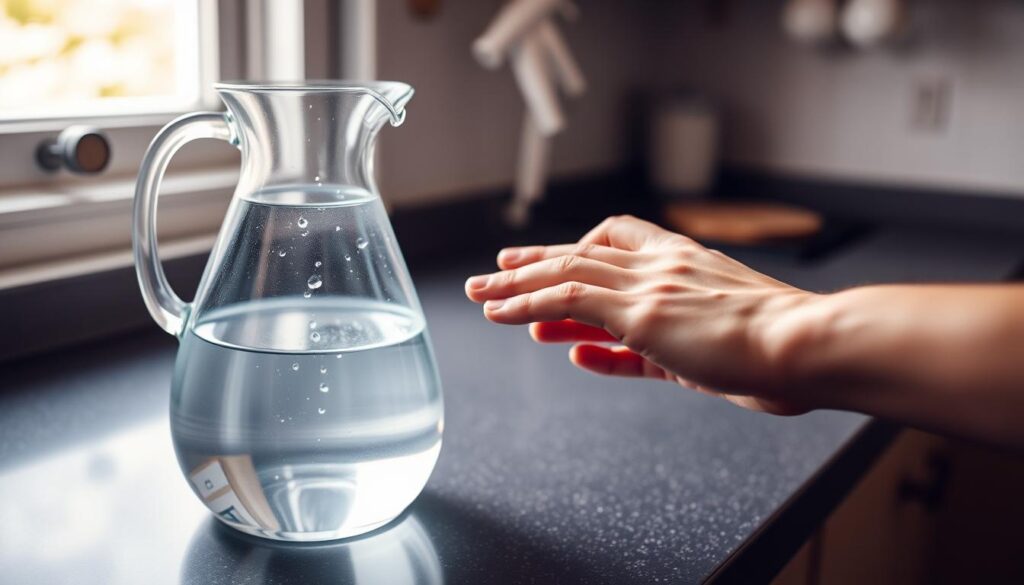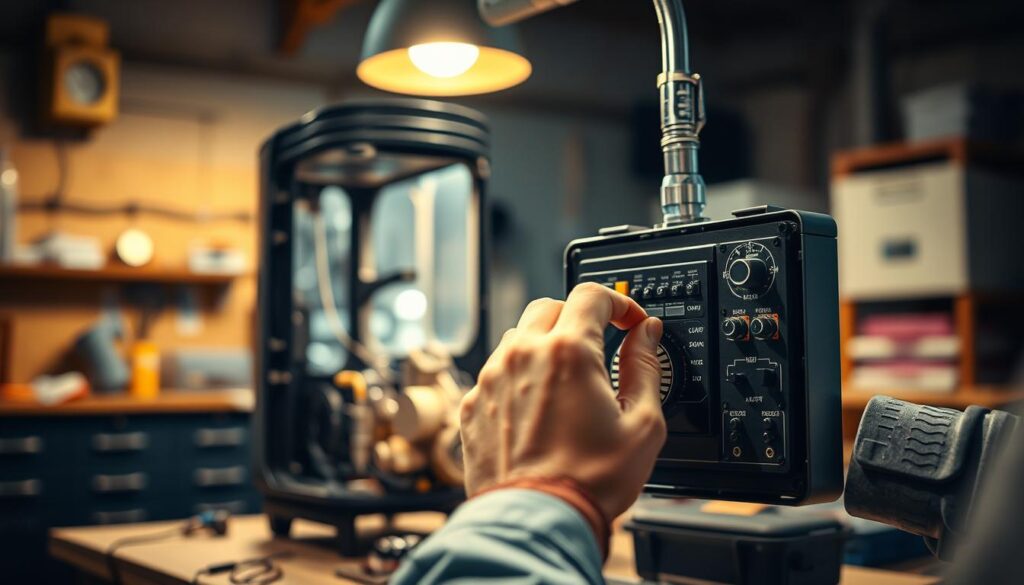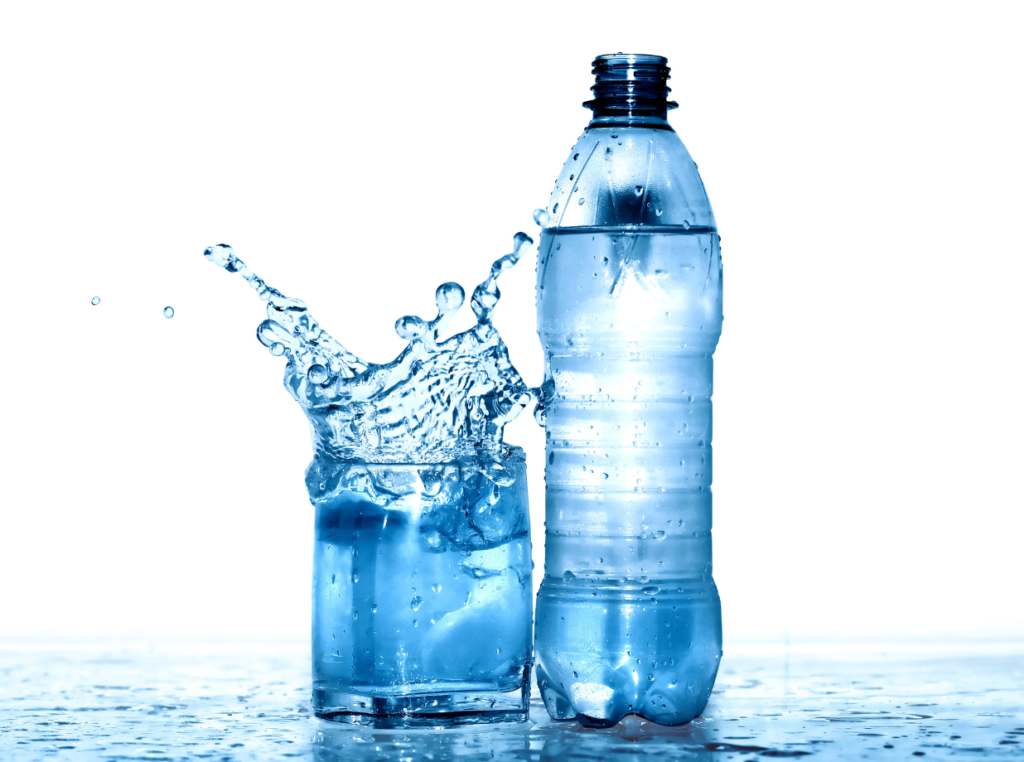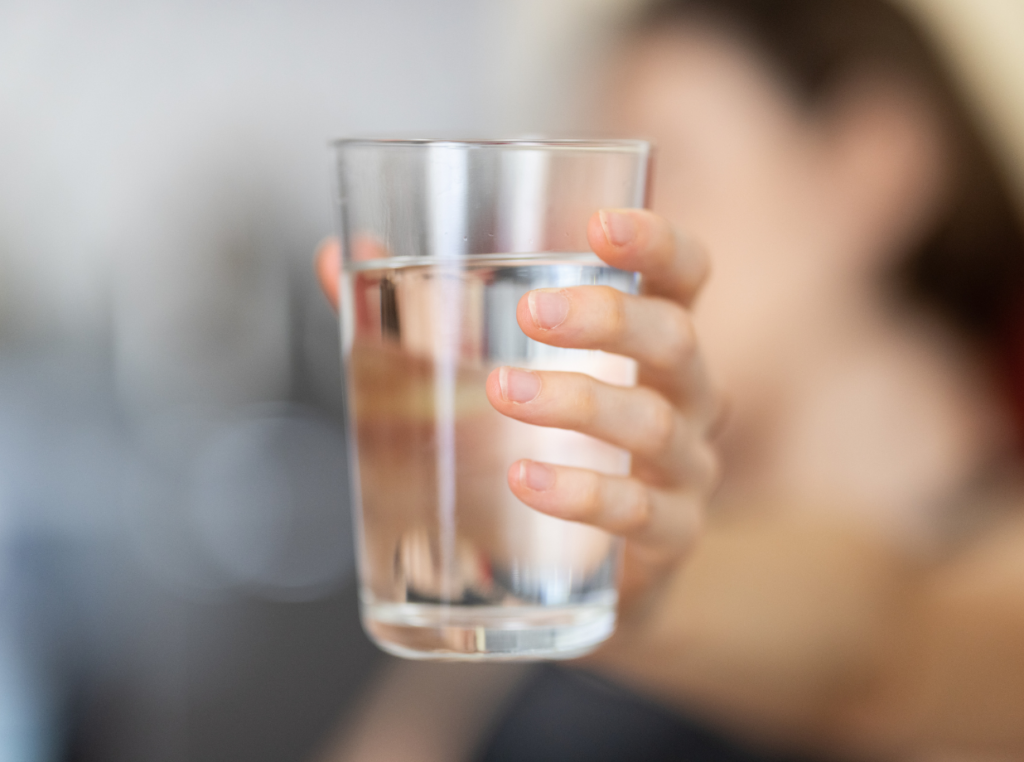Are you experiencing issues with your water distiller not producing clean water as expected? Perhaps you’re noticing a strange taste or odor, or maybe your distiller is not functioning at all. Troubleshooting these issues is crucial to ensure you have access to clean drinking water.
Water distillers are designed to remove impurities from water, but like any appliance, they can encounter problems. Issues with production, taste, and maintenance are among the most common complaints. Understanding how to address these issues can save you time and money.
Key Takeaways
- Identify common issues with water distillers, including production and taste problems.
- Learn basic troubleshooting steps to resolve common issues.
- Understand the importance of regular maintenance for optimal performance.
- Discover how to improve the taste and quality of distilled water.
- Find out when it’s necessary to replace parts or the entire distiller.
Understanding How Water Distillers Work
Understanding how water distillers work is essential for maintaining and repairing these devices. Water distillers are designed to remove impurities from water through a process that involves boiling and condensation.
The Distillation Process Explained
The distillation process begins with boiling the water, turning it into vapor. This vapor is then cooled and condensed back into liquid form, free from many contaminants. The process effectively removes impurities, resulting in clean drinking water.
Key Components of a Water Distiller
A water distiller consists of several key components, including a boiling chamber, condenser coils, and a collection vessel. The boiling chamber is where the water is heated, producing vapor. The condenser coils cool this vapor, turning it back into liquid, which is then collected in the collection vessel.
Signs Your Water Distiller Needs Troubleshooting
Troubleshooting your water distiller begins with understanding the common signs that something is amiss. Recognizing these signs early can help prevent minor issues from becoming major problems.
Unusual Noises or Odors
If your water distiller starts making unusual noises or emits unpleasant odors, it’s a clear indication that something is wrong. Grinding, rattling, or other abnormal sounds could signal a problem with the machine’s mechanical parts. Similarly, if the distilled water or the distiller itself smells bad, it might indicate a buildup of bacteria or other contaminants.
Changes in Water Quality or Output
A change in the quality or taste of the distilled water is another sign that your water distiller needs attention. If the water output decreases or the taste becomes unpleasant, it could be due to a variety of issues, including filter problems or contamination within the system. Regularly checking the quality of the output can help identify issues early.
Decreased Production Efficiency
A decrease in production efficiency, such as the distiller taking longer than usual to produce water, is a sign that it needs troubleshooting. This could be due to scale buildup, issues with the heating element, or other internal problems. Addressing these issues promptly can help maintain the distiller’s efficiency and prolong its lifespan.
How to Troubleshoot Common Water Distiller Problems
Troubleshooting a water distiller can seem daunting, but with a systematic approach, you can identify and fix issues efficiently. When your water distiller malfunctions, understanding the right steps to diagnose and repair it is crucial.
Systematic Approach to Problem Identification
A systematic approach involves checking the distiller’s basic functions first. Start by ensuring the device is properly plugged in and that there are no issues with the power supply. Next, inspect the water feed and check for any blockages or kinks in the tubing that could impede water flow.
Essential Tools for Troubleshooting
Having the right tools can make troubleshooting easier. Essential tools include a multimeter for checking electrical components, a cleaning brush for removing scale buildup, and a screwdriver set for accessing internal parts. Using these tools, you can diagnose issues such as faulty heating elements or malfunctioning pumps.
| Tool | Purpose |
|---|---|
| Multimeter | Checking electrical components |
| Cleaning Brush | Removing scale buildup |
| Screwdriver Set | Accessing internal parts |
Safety Precautions During Troubleshooting
Safety is paramount when troubleshooting your water distiller. Always unplug the device before starting any repair work to avoid electrical shock. Wear protective gloves and eyewear to protect against sharp edges and hot surfaces. Ensure the area is well-ventilated to avoid inhaling any fumes from cleaning products.
By following a systematic approach, using the right tools, and taking necessary safety precautions, you can effectively troubleshoot and resolve common water distiller problems.
Water Distiller Not Producing Water
If your water distiller is not producing water, there are several potential causes to investigate. Understanding these causes can help you troubleshoot the issue effectively.
Power Supply Issues
First, ensure that your water distiller is receiving power. Check that it’s properly plugged in and that the outlet is working. Sometimes, a tripped circuit or a blown fuse can be the simple reason behind the distiller’s failure to operate.
Heating Element Problems
The heating element is crucial for the distillation process. If it’s faulty or damaged, the distiller won’t produce water. Inspect the heating element for any signs of wear or damage, and consider replacing it if necessary.
Water Feed Blockages
Blockages in the water feed system can also prevent your distiller from producing water. This can be due to mineral buildup or debris clogging the inlet valves.
Cleaning Inlet Valves
To address blockages, start by cleaning the inlet valves. Turn off the distiller, disconnect the water supply, and gently clean the valves with a soft brush or cloth. This can help remove any debris or mineral deposits.
Addressing Mineral Buildup
Mineral buildup is a common issue in water distillers, especially in areas with hard water. Regularly descaling your distiller can prevent this problem. Use a descaling solution recommended by the manufacturer to remove mineral deposits.
By checking these potential causes and performing the necessary maintenance, you can often resolve the issue of your water distiller not producing water. Regular maintenance is key to preventing such problems.
Addressing Water Distiller Leakage Issues
One of the most common problems with water distillers is leakage, which can stem from various sources. Leaks not only waste water but can also compromise the distiller’s efficiency and the quality of the distilled water.
Identifying Leak Sources
The first step in troubleshooting water distiller leaks is to identify where the leak is coming from. Common sources include gaskets, seals, and condensation around the distiller. Inspecting your distiller regularly can help you catch these issues early.
Fixing Gasket and Seal Problems
Gaskets and seals are prone to wear and tear, leading to leaks. To fix these issues, turn off the distiller and unplug it before inspecting the gaskets and seals for any signs of damage. Replacing damaged parts is crucial for maintaining the distiller’s integrity.
Dealing with Condensation Issues
Condensation is another common cause of leakage. Ensuring proper installation and regular maintenance can minimize condensation-related leaks.
Checking Drain Lines
Clogged or improperly connected drain lines can cause leaks. Regularly check and clean the drain lines to prevent blockages.
Inspecting Collection Container Connections
Loose or damaged connections between the distiller and the collection container can also lead to leaks. Ensure all connections are secure and inspect them regularly for any signs of wear.
By following these steps and maintaining your water distiller, you can effectively troubleshoot and prevent leakage issues, ensuring your distiller operates efficiently and safely.
Resolving Unusual Tastes in Distilled Water
Resolving unusual tastes in distilled water requires identifying the root cause. Unusual tastes can be due to various factors, including issues with the carbon filter, mineral deposits, or other contaminants.
Carbon Filter Replacement
One common cause of unusual tastes is an old or clogged carbon filter. Replacing the carbon filter regularly can help maintain the purity and taste of the distilled water. It’s recommended to check the manufacturer’s guidelines for replacement intervals.
Cleaning Mineral Deposits
Mineral deposits can also affect the taste of distilled water. Regular descaling of the distiller can prevent mineral buildup. Use a gentle descaling solution to avoid damaging the equipment.
Addressing Plastic or Metallic Tastes
Sometimes, distilled water can have a plastic or metallic taste. This can be due to the materials used in the distiller or storage containers. Ensuring that all parts are food-grade and properly cleaned can mitigate this issue.
Post-Filter Solutions
If the taste persists after replacing the carbon filter, consider using a post-filter solution. These additional filters can further purify the water, removing any remaining impurities that might cause an unusual taste.

Fixing Heating Element Problems
The heating element is a critical component of a water distiller, and issues with it can cause significant problems. A faulty heating element can lead to reduced efficiency, increased energy consumption, and even complete system failure.
Testing Heating Element Functionality
To diagnose heating element problems, you need to test its functionality. Use a multimeter to check for continuity and ensure it’s receiving the correct voltage. If you’re unsure, consult your user manual or contact a professional.
Replacing Faulty Heating Elements
If the heating element is faulty, replacement is usually the best option. Ensure you purchase a compatible replacement part and follow the manufacturer’s instructions for installation. Always turn off the power supply before starting the replacement process.
Dealing with Mineral Buildup on Elements
Mineral buildup is a common issue that can affect heating element performance. Regular descaling can help prevent this problem.
Using Vinegar for Descaling
One effective method for descaling is using vinegar. Mix equal parts water and white vinegar in the distiller, and run a cycle. This natural solution is safe and effective.
Commercial Descaling Solutions
Alternatively, you can use commercial descaling solutions specifically designed for water distillers. Follow the product instructions for the best results.
Regular maintenance, including descaling, can significantly extend the life of your water distiller’s heating element.
- Check your user manual for specific maintenance recommendations.
- Regularly inspect the heating element for signs of wear or mineral buildup.
- Descales your water distiller every 3-6 months, depending on usage.
Troubleshooting Fan and Cooling System Issues
Troubleshooting fan and cooling system problems is crucial for maintaining your water distiller’s efficiency. Issues with these components can lead to overheating and reduced performance.
Fan Not Working Properly
If the fan is not working correctly, it can cause the distiller to overheat. Check if the fan is clogged with dust or if its motor is faulty. Cleaning or replacing the fan as needed can resolve the issue.
Cooling System Blockages
Blockages in the cooling system can also lead to overheating. Inspect the cooling system for any obstructions or mineral buildup. Regular cleaning can help prevent such blockages.
Overheating Problems
Overheating can damage the distiller and affect the quality of the distilled water. Ensure that the cooling system is functioning correctly and that there are no blockages.
Cleaning Condenser Coils
Cleaning the condenser coils is a crucial step in maintaining the cooling system. Use a soft brush or cloth to remove any dust or debris. Regular maintenance can prevent overheating issues.
Resolving Control Panel and Electrical Problems
Understanding how to diagnose and fix control panel and electrical issues is essential for any water distiller user. Control panel problems can range from unresponsive controls to complex electrical faults, impacting the overall performance of your water distiller repair.
Unresponsive Controls
If your water distiller’s control panel is unresponsive, it could be due to a simple issue like a power surge or a more complex problem such as a faulty circuit board. To troubleshoot water distiller controls, follow these steps:
- Check the power cord and ensure it’s properly plugged in.
- Verify that the outlet is working correctly.
- If the issue persists, consult the user manual or contact a professional for water distiller repair.
Error Codes and What They Mean
Many modern water distillers display error codes when something goes wrong. These codes can help you identify the problem during troubleshooting water distiller processes.
- E1: Typically indicates a heating element issue.
- E2: Often related to a problem with the temperature sensor.
Wiring and Circuit Issues
Wiring and circuit problems can be more challenging to diagnose. Look for signs of wear or damage on the wiring and circuit boards, which may require professional water distiller repair services.
Resetting Electronic Controls
Sometimes, simply resetting the electronic controls can resolve the issue. Check your user manual for instructions on how to do this as part of your troubleshooting water distiller routine.

Countertop vs. Whole-House Distiller Troubleshooting
Effective troubleshooting of water distillers hinges on understanding the specific characteristics of countertop versus whole-house models. While both types aim to purify water, their design, functionality, and maintenance needs differ significantly.
Specific Issues with Countertop Units
Countertop water distillers are prone to issues such as scale buildup, filter clogging, and occasional leakage. These problems often arise from improper maintenance or mineral-rich water sources.
- Regular descaling can mitigate scale buildup.
- Replacing filters as recommended by the manufacturer can prevent clogging.
- Checking connections and seals can help identify and fix leaks.
Troubleshooting Larger Whole-House Systems
Whole-house water distillers, being more complex and integrated into the home’s plumbing system, require a different troubleshooting approach. Issues may include system-wide contamination, complex electrical faults, or more extensive scale buildup.
Key troubleshooting steps for whole-house systems include:
| Issue | Troubleshooting Step |
|---|---|
| System Contamination | Inspect and clean the pre-filter and post-filter. |
| Electrical Faults | Check circuit boards and wiring for damage or wear. |
| Scale Buildup | Descale the system according to the manufacturer’s instructions. |
Differences in Maintenance Requirements
The maintenance needs of countertop and whole-house distillers vary. Countertop units require more frequent filter replacements and descaling, whereas whole-house systems need more comprehensive checks, including inspecting valves and plumbing connections.
Understanding these differences is key to resolving water distiller performance problems effectively. Regular maintenance, tailored to the specific type of distiller, ensures optimal performance and longevity.
Preventative Maintenance to Avoid Future Problems
To avoid common issues with your water distiller, adopting a preventative maintenance routine is essential. Regular maintenance not only ensures the longevity of your device but also guarantees the production of clean, quality water. By understanding the importance of maintenance and implementing a routine, you can significantly reduce the likelihood of operational issues.
Regular Cleaning Schedule
Establishing a regular cleaning schedule is vital for the optimal performance of your water distiller. This involves cleaning the exterior and interior components, including the water tank and condenser coils. Use a mild detergent and warm water to wipe down surfaces, and descale the unit as recommended by the manufacturer.
Descaling Procedures
Descaling is a critical aspect of water distiller maintenance, as mineral buildup can significantly impair performance. To descale your unit, mix a solution of water and white vinegar or a descaling solution according to the manufacturer’s instructions. Run this solution through the distiller to remove mineral deposits, then rinse thoroughly with clean water.
Component Inspection Guidelines
Regular inspection of your water distiller’s components is crucial for identifying potential issues before they become major problems. Check the heating element, condenser coils, and seals for signs of wear or damage. Replace any worn-out parts promptly to maintain the unit’s efficiency and safety.
Recommended Maintenance Timeline
- Daily: Check and clean the water tank and exterior.
- Weekly: Inspect condenser coils and clean if necessary.
- Monthly: Descale the unit according to the manufacturer’s instructions.
- Quarterly: Inspect and replace worn-out seals or other components.
By following this maintenance schedule and understanding the importance of each task, you can ensure your water distiller operates efficiently and effectively for years to come. Regular maintenance is key to fixing water distiller issues before they arise and ensuring the quality of your distilled water.
Conclusion
Troubleshooting common water distiller problems is crucial for maintaining clean drinking water. By understanding how water distillers work and recognizing signs of trouble, you can address issues before they become major problems.
Throughout this guide, we’ve explored various aspects of water distiller troubleshooting, from identifying unusual noises or odors to fixing heating element problems. Regular maintenance, such as cleaning and descaling, is also vital to prevent future issues and ensure optimal performance.
To keep your water distiller running efficiently, it’s essential to apply the knowledge gained from this guide. By doing so, you’ll be able to resolve common problems and enjoy clean, distilled water. For further learning, exploring additional resources on water distiller troubleshooting can help you stay up-to-date on the best practices for maintaining your water distiller.
By following the steps outlined in this guide on How to Troubleshoot Common Water Distiller Problems, you’ll be well-equipped to handle water distiller troubleshooting and maintain a reliable source of clean drinking water.



